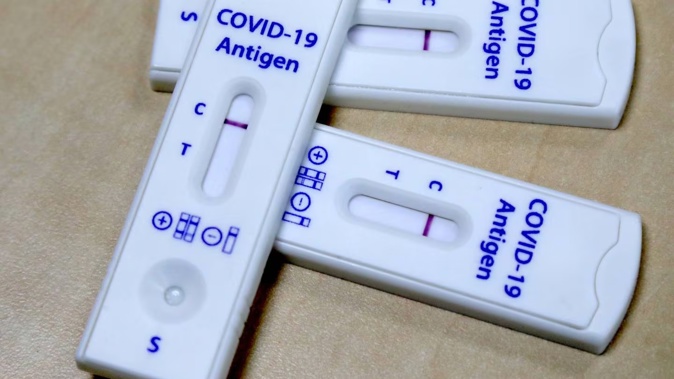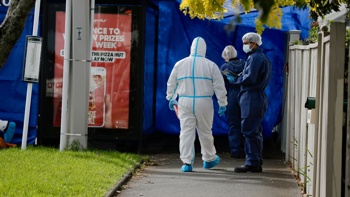
National rates of Covid-19 have surged to their highest levels since New Zealand’s fifth wave began, the latest wastewater data shows, as the Government mulls whether to stop funding free test kits at pharmacies.
ESR’s most recent surveillance showed a national average of 8.59 million copies of the virus detected per person, per day in wastewater at January 7 – three times the levels observed in mid-spring, and higher than the largest values reported over December.
The latest Ministry of Health data showed weekly hospitalisations continued to number in the hundreds, with 355 people receiving care as at last Sunday.
GPs have also been reporting consistently high numbers of patients with respiratory infections, which one Wellington-based urgent care doctor attributed to about a quarter of all presentations over the first 10 days of 2024.
/cloudfront-ap-southeast-2.images.arcpublishing.com/nzme/XIDXQ2XS5VGYTLDKE6OE6AKEXM.jpg)
This graph, up to January 7, shows average SARS-CoV-2 genome copies detected per person per day in wastewater for New Zealand, along with the reported case numbers. Source / ESR
Covid-19 modeller Professor Michael Plank said that while there were signs hospital admissions were starting to coming down, it was too early to say whether New Zealand’s largest wave in a year had peaked.
“We’d need another week or two of data to be fully clear about how things are tracking.”
But he suspected the highly mutated Omicron subvariant JN.1 was contributing “significantly” to infection rates and could now be responsible for more than half of cases.
Behaviour patterns were also a factor: while school holidays and sunny weather would be taking some of the pressure off, social gatherings and crowded events would be adding to it.
“It’s all part of this holiday picture where you’ve got a few different parts, and the data gets a bit murky.”
As the wave had a relatively slow build-up, Plank said it could have a slower decline – meaning there’d be many more infections to come over the rest of summer.
Meanwhile, the Government has confirmed it’s reviewing whether face masks and rapid antigen tests (RATs) will be offered free beyond the end of February, when the funded policy was due to end.
“Access to RATs beyond that time is currently under consideration and when decisions are made, these will be communicated,” said Becky Jenkins, protection director of Te Whatu Ora’s National Public Health Service.
For national surveillance, Plank said there was now less value in test results being reported than in the past.
“We’ve known for a long time that it’s not really representative of the total number of infections, and that’s become more true over time.”
While RATs might still be useful for people to test themselves in instances like visiting at-risk relatives, “whether it’s justified to keep free access for RATs for the general population is another question”.
Dr Andrew Old, deputy director general of the Ministry of Health’s Public Health Agency, said the Government was keeping watch on Covid-19 with online dashboards tracking cases, hospitalisations and deaths.
“Consistent with many other countries, we continue to monitor wastewater for an early warning of changes in Covid-19 infection trends,” he said.
“As the virus continues to evolve, we also monitor for new variants of the virus, using wastewater and whole genome sequencing.”
Jamie Morton is a specialist in science and environmental reporting. He joined the Herald in 2011 and writes about everything from conservation and climate change to natural hazards and new technology.
Take your Radio, Podcasts and Music with you









